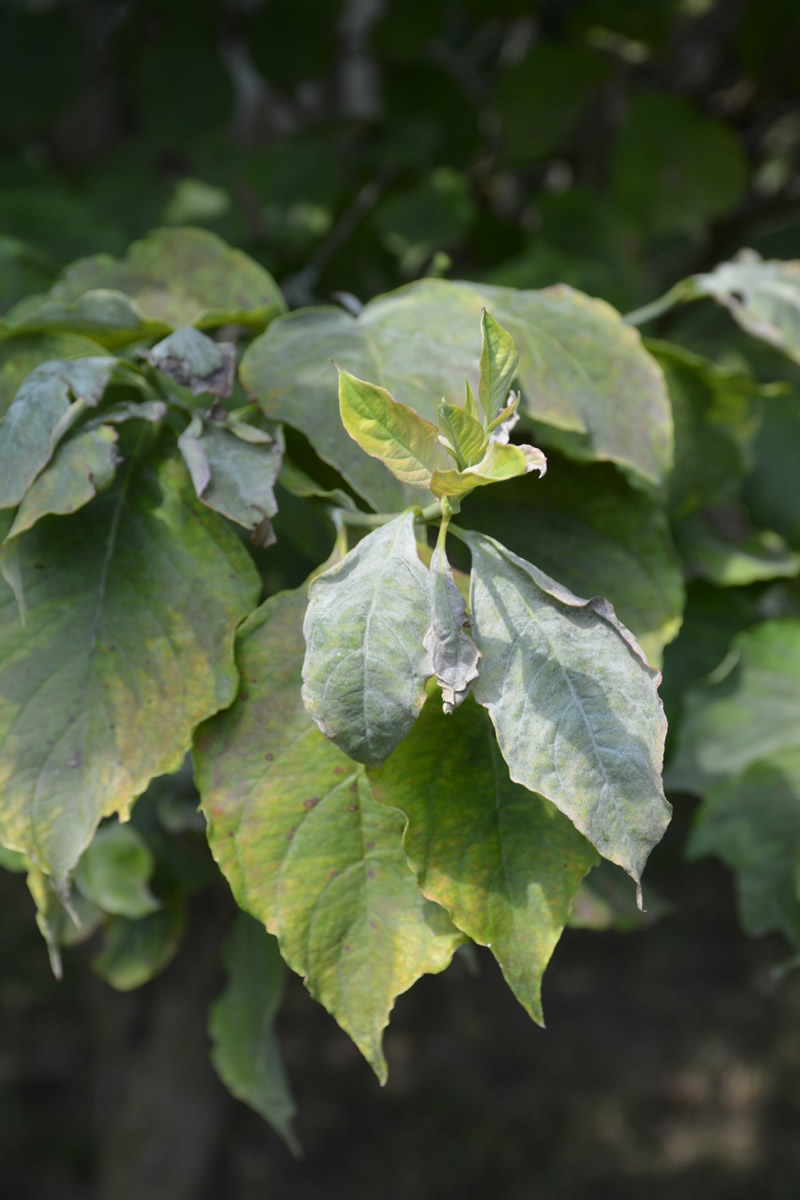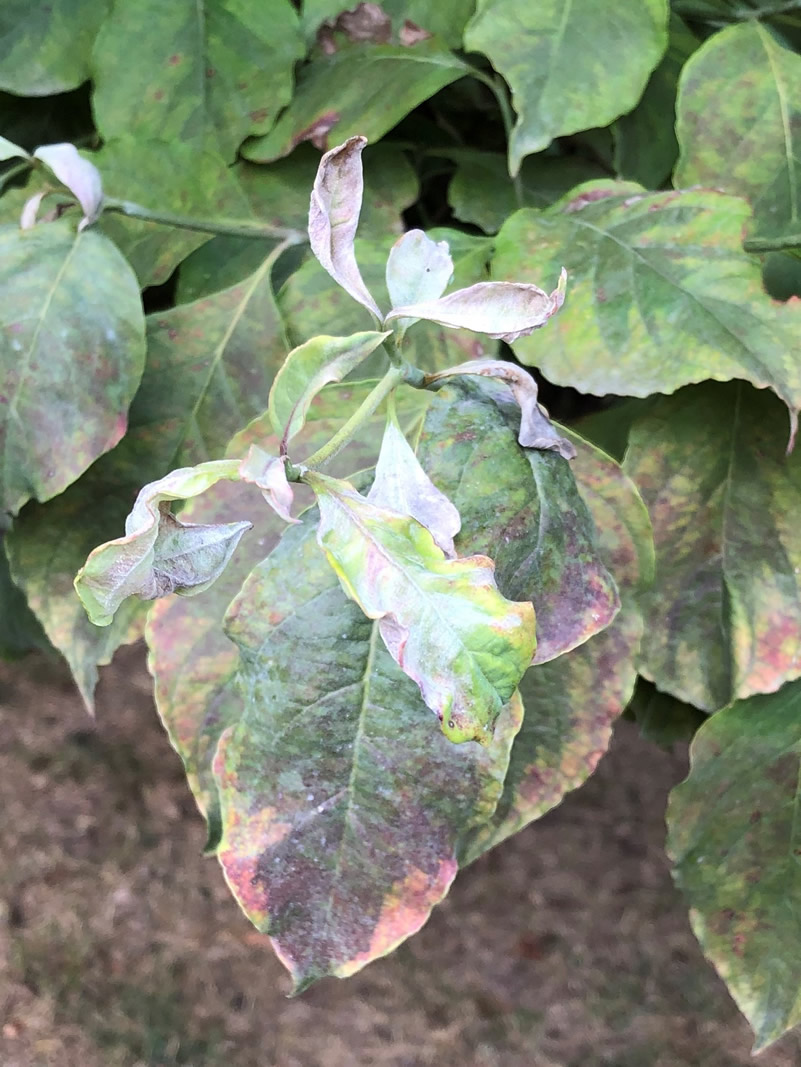Issue 9, August 12, 2021
Dogwood Powdery Mildew
Powdery mildew is a common fungal disease problem on many perennials, as well as annuals, shrubs, and even trees and turf. It is most noticeable in the hot, dry dog days of August. Unlike most fungal diseases, powdery mildew develops rapidly in extended periods of warm, dry weather when morning dews are heavy.

Powdery mildew on Cornus florida. Travis Cleveland, University of Illinois
We consider powdery mildew to be more of an aesthetic problem in most cases because it occurs late in the season and does not affect overall plant health. However, flowering dogwoods may be more severely affected by this disease because it occurs earlier in the season. Look for powdery mildew of dogwood on crowded plants, in a shaded location, or where air circulation is poor. Dogwoods in the open, as specimen trees, are less likely to be infected. The symptoms on dogwood are different than the typical powdery mildew and may be passed off as another problem. On dogwood, this disease may cause a the typical white powdery growth on the leaf surface, but it may also cause scorch on the edges of leaves, dead patches on leaves, yellowing, leaves with a reddish color, and premature leaf drop. While the disease is unlikely to kill the tree, it may decrease flower production the following year and increase susceptibility to insects and other diseases.

Powdery mildew on Cornus florida. Travis Cleveland, University of Illinois
Disease Management
When possible, plant a powdery mildew-resistant species or cultivar. Flowering dogwood, Cornus florida, as a species, has limited resistance to powdery mildew. However, the University of Tennessee bred several flowering dogwood cultivars with powder mildew resistance. These include: Karen's Appalachian Blush, Jean's Appalachian Snow, Kay's Appalachian Mist, and 'Appalachian Joy.' Other resistance species include: Kousa, C. kousa; redosier, C. sericea; Corneliancherry, C. mas; gray, C. alternifolia; and Tatarian, C. alba. Some hybrids of C. kousa × C. florida such as 'Stellar Pink,' ‘Stardust,’ ‘Galaxy,’ ‘Constellation,’ and ‘Aurora’ are also resistant to powdery mildew.
Cultural practices include pruning out dead wood, watering the plants in periods of drought, and prune surrounding plants to promote better airflow in the landscape. It is also a good idea to mulch dogwoods to avoid trunk injuries from mowers or trimmers.
Fungicides may be used to control this disease, but make sure that they will be worth the expense. Begin applications to high-value flowering dogwoods in early June, and reapply once every two to three weeks until mid-August. Be certain that your spray equipment provides good coverage of the fungicide. Fungicides that are registered for use on dogwoods may include azoxystrobin, copper products, myclobutanil, and thiophanate-methyl. Homeowners can apply products containing myclobutanil, neem oil, potassium bicarbonate, sulfur, tebuconazole, or triticonazole.
Author:
Travis Cleveland